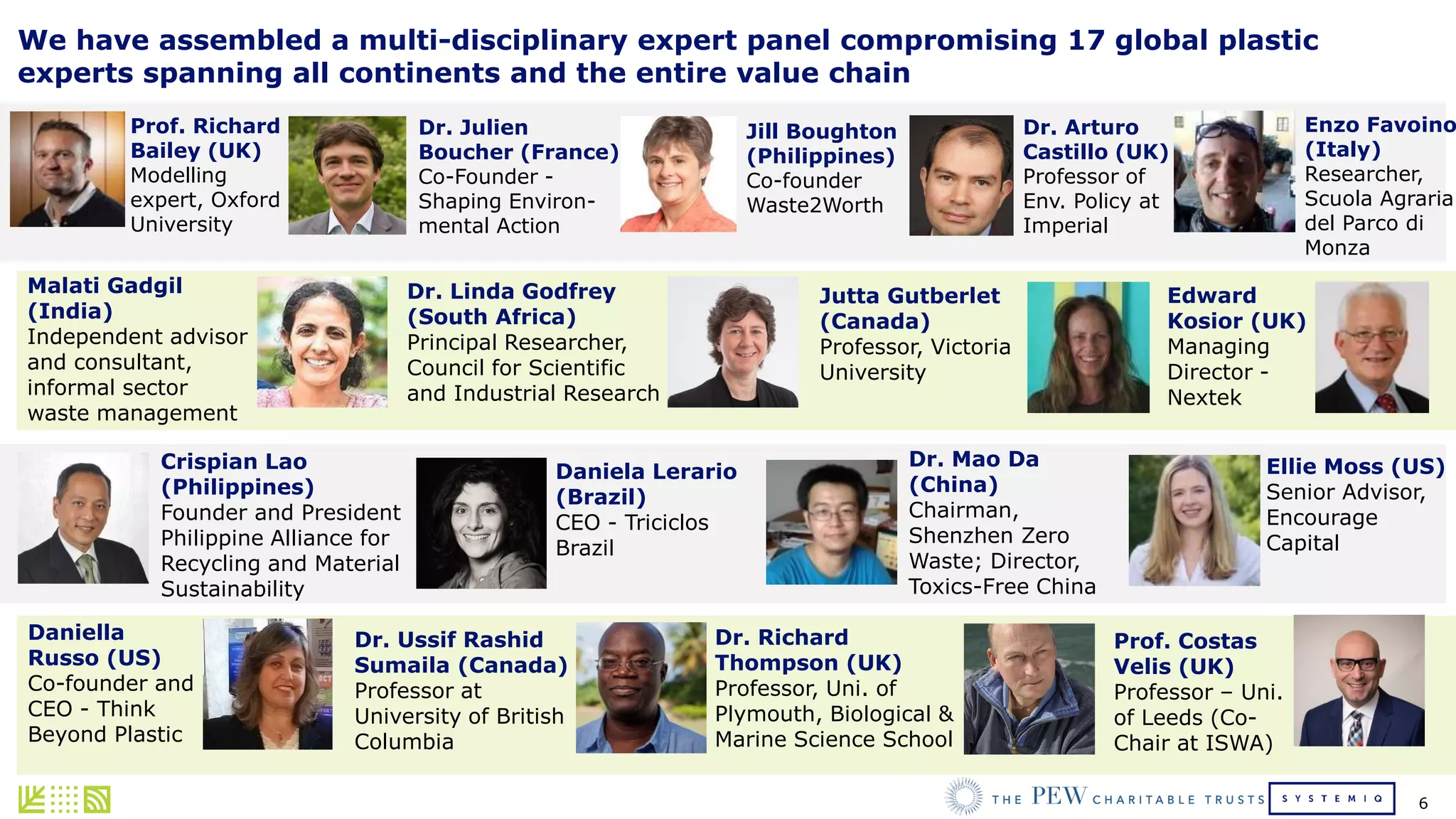This document provides information about a project to analyze pathways to stop ocean plastic pollution through a robust, evidence-driven analysis considering economic, environmental, and social implications. The project objectives are to:
1) Provide analysis of both upstream and downstream solutions across economic, environmental, and social dimensions with a focus on solutions.
2) Conduct the analysis scientifically with input from over 100 experts representing all geographies and the plastic value chain.
3) Provide a full cost analysis of different pathways to 2040 through a comprehensive dynamic systems model developed with Oxford University.











